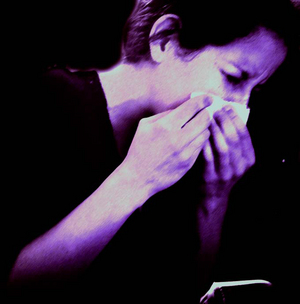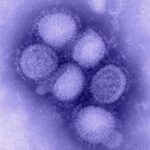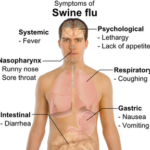Diagnosing the swine flu (H1N1 virus) isn’t rocket science, but it is not an exact science either. There are generally three ways to diagnose the swine flu: through observing symptoms, through the PCR-diagnostic test, and through the rapid diagnostic test.
For mild cases, which are those not needing hospitalization, the swine flu is diagnosed by observing symptoms. Swine flu symptoms are much like those of the seasonal flu, including:
- Fever
- Cough
- Sore Throat
- Runny or Stuffy Nose
- Headache
- Fatigue
- Chills & Body Aches
- And in many cases, especially children more often than adults: Diarrhea & Vomiting
These symptoms are not exact, however. Many other illnesses have similar symptoms, so it can be hard to tell for certain if the individual has the swine flu or something else. A licensed health care provider may be able to help confirm if the illness is swine flu and if there is risk for complications.
PCR-Diagnostic Test
The nasal swab diagnostic test, called the PCR-diagnostic test, for the swine flu quit being done for mild cases late in July 2009. The Center for Disease Control (CDC) stated on July 24, 2009 that only the most ill patients needing hospitalization, when exact viral diagnosis can assist medical professionals in selecting proper medications, or in cases of death and autopsy generally warranted the PCR-diagnostic test for the swine flu virus.
When the PCR-diagnostic test is performed, a nasal swab removes cells off the inside of the sinus passage. The specimen is sent to a laboratory working in cooperation with the CDC for testing, usually state public health laboratories. By the time the results are back, many patients with mild cases are already recovering well on their own, so this test has been deemed an unnecessary step and cost by the CDC and the medical community at large for cases not needing hospitalization.
Rapid Diagnostic Test
There is also a rapid diagnostic test doctors and clinics can use, but it is not as accurate as the PCR-diagnostic test in detecting the influenza A H1N1 swine flu virus. However, the rapid test is said to be accurate in detecting the novel H1N1 swine flu virus. Every state public health department has these rapid tests on-hand. Clinics and doctors can get the rapid tests with everything they need to properly test, store, and ship the specimens for testing.
The lab test is generally recommended to be done within the first 5 days of symptoms, while the individual is most likely contagious. However, children and some adults can be contagious with the swine flu for 10 days. With the broad range of time that might pass before a person develops acute symptoms needing swine flu diagnosis confirmation, it is understandable that specific recommendations can vary by state or even community.
Disclaimer: This or any other online article content cannot replace medical advice from licensed professionals. Content is for informational purposes only. Please seek counsel from a licensed health professional for this or any medical issue.
Resources:
http://www.dnj.com/article/20090917/NEWS01/909170326/1002/RSS01
http://online.wsj.com/article/SB125197774116682973.html
http://www.education.com/special-edition/swine-flu/
http://www.cdc.gov/media/archives.htm
http://www.daylife.com/topic/H1N1
Reference:
- Mollen Flu Shot Clinic Review, by Lynn Pritchett: www.associatedcontent.com/article/2067633/flu_shot_clinics_in_the_united_states.html?
- More articles on Seasonal Flu and Swine Flu by Lynn Pritchett: www.associatedcontent.com/user/12990/lynn_pritchett.html
- Online Resources for Health Care Reform, by Lynn Pritchett: public-healthcare-issues.suite101.com/article.cfm/online_resources_on_healthr_care_re





